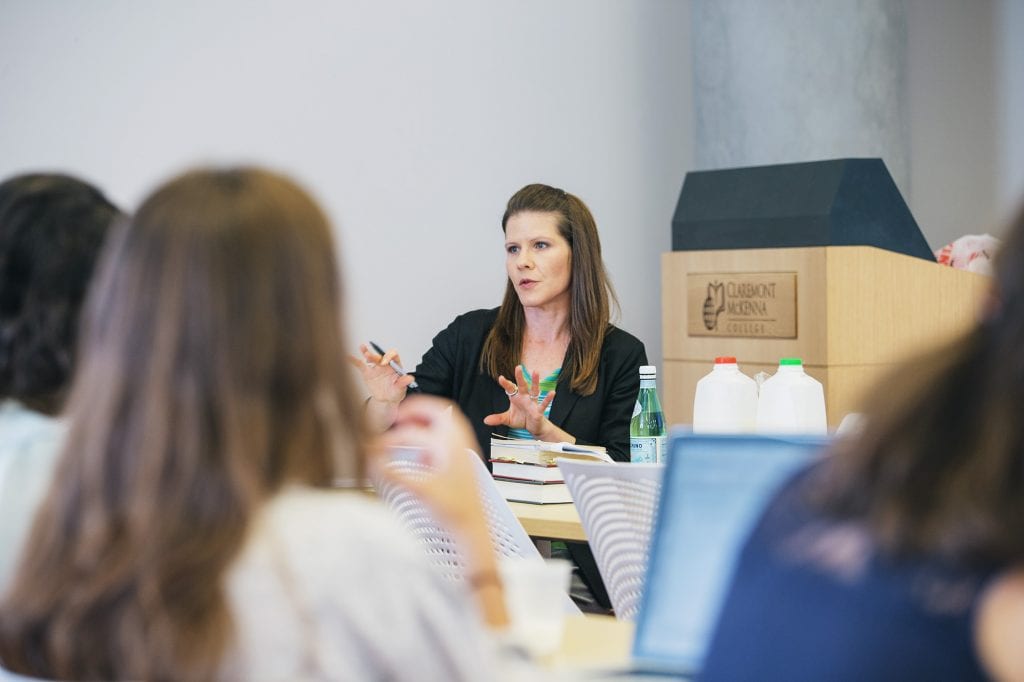How should we think about the role of higher education in addressing the tremendous challenges facing the world today? How should Claremont McKenna College in particular respond? What are we doing today at CMC to equip our students to make their own special contributions?
Each generation, each institution may have different answers to these questions.
It is important to refresh this conversation in order to think about the why—the purpose of our mutual investments—in order to evaluate both what and how we are doing.
Our choice of purpose does not have to be singular; indeed, monolithic views are likely to be too rigid or time-bound to be effective. The scope and depth of what we mean by such terms as liberal arts or leadership can range widely, and such constructive ambiguities can allow us to find powerful, albeit different, personal connections to shared concepts. That’s healthy. Yet, we should endeavor at the same time to be expressive about our values and their proposition. Without an articulation of value, we have no working compass, no measure of achievement to reflect upon, no North Star by which to navigate our shared course.
From its origins, our College has applied an exterior perspective to internal priorities, framing our mission in terms of the qualities of responsible leadership that we wish to produce through our students. The underlying goal of CMC to lift the society around us is, I believe, one of the key drivers behind both its success to date and its promise for the future.
To elaborate and intensify the connections between our internal programs and our external mission, I would like to engage the community in a series of discussions about three vitally important capabilities. The working hypothesis for us to explore is this:
Creativity, empathy, and courage are of critical, sustained importance, both powerful in generating value and central to other virtues we seek to cultivate through the entirety of our program.
Why these specific capacities? We draw upon creativity to solve the most intractable problems, drive innovation, and open the imagination to new possibilities. We deploy empathy for a deeper understanding of those around us, for collaboration and cooperation in a world of conflict, where understanding difference is critical to the sustainability of a world that is ever smaller, flatter, hotter, and more crowded. And we need courage for integrity in public life, to sustain entrepreneurship in the economy and leadership in our communities. We need courage for ethical decision-making and the nerve to speak truth to power.
How do we reinforce these values here at CMC—through both our curriculum and related student experiences (from athletic competition to debate, from simulations of decision-making to new forms of research and artistic expression)?
And how can we all make a reflexive commitment to these values: to be creative in our approach, empathic in understanding diverse perspectives and views, and courageous in taking the necessary steps to meet the demands of our time?
To engage these questions, I have dedicated and matched a new president’s Mellon Foundation grant to enable faculty and students to explore these values and the ways that we can best capture, grow, and even measure them. As a first step, please keep an eye out for the announcement of a special faculty grant program, building on the Presidential Scholars Roundtables of last year. We are also developing a special program for students to grapple with these questions, and we will be in touch soon on that as well.


As a student of the 1st and 2nd CMC presidents familiar with the 3rd and 4th in terms of policy, I would say the primary mission of an institution of higher education should be training minds to think both clearly and creatively (which are distinct). Clear thinking can be taught. Creative thinking can be encouraged and demonstrated, as well as practiced in a non-threatening environment. Leadership, which is the application of clear and creative thinking to the problems of groups (both small and large), is a social activity that can be learned but not taught. As in the case of creative thinking an institution can encourage this, demonstrate it, and allow it to be tried out in situations that do not have tragic consequences. But too often in my experience little thought is given to developing good follower-ship, which is as essential for success in life as leadership. All leaders need followers and all leaders spend most of their time following someone else, especially in our modern society of organizations. So an educational institution has a responsibility to make this distinction and teach to it. There are many activities, curricular and extra-curricular, that can accomplish these goals and they all need to be supported and used because so many issues today are multidimensional. May you live long and prosper (at this task), as we used to say back in Marks Hall in the late ’60’s!